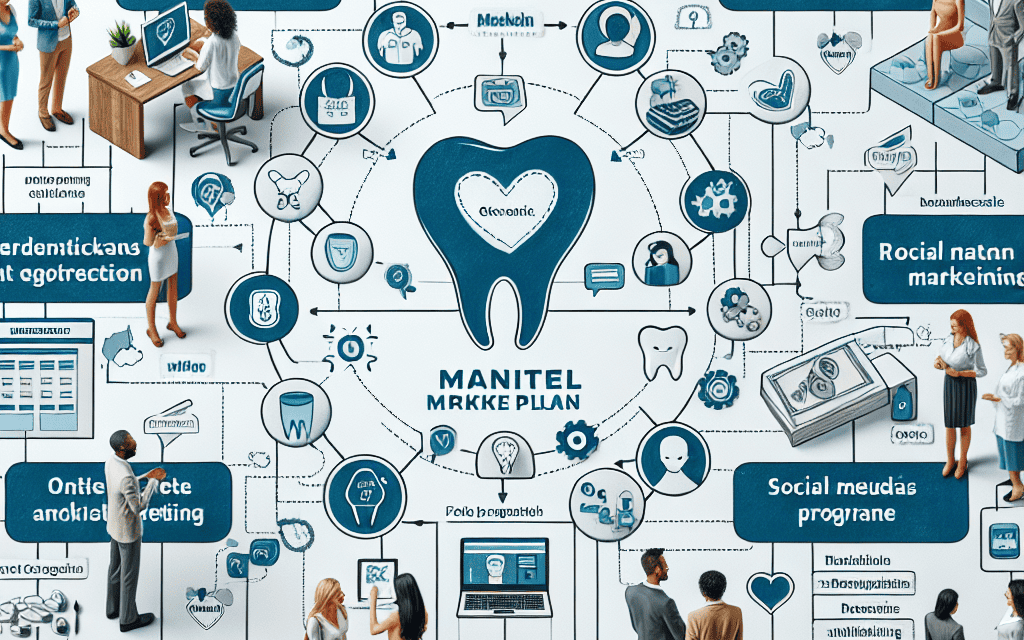Developing a Patient-Centric Marketing Plan for Your Dental Practice

In today’s competitive healthcare environment, dental practices must adopt innovative marketing strategies to attract and retain patients. A patient-centric marketing plan focuses on understanding and meeting the needs of patients, ensuring their satisfaction, and building long-term relationships. This article explores the essential components of a patient-centric marketing plan for dental practices, providing actionable insights and strategies to enhance patient engagement and loyalty.
Understanding Your Patient Demographics
To develop a successful patient-centric marketing plan, it is crucial to understand the demographics of your patient base. This involves gathering data on age, gender, income level, geographic location, and other relevant factors. By analyzing this information, dental practices can tailor their marketing efforts to meet the specific needs and preferences of their patients.
For instance, a practice located in a suburban area with a high percentage of families may focus on promoting family dental services, while a practice in an urban setting with a younger demographic might emphasize cosmetic dentistry and orthodontics. Understanding patient demographics allows practices to create targeted marketing campaigns that resonate with their audience.
Moreover, patient demographics can inform the choice of marketing channels. Younger patients may be more responsive to digital marketing efforts, such as social media and email campaigns, while older patients might prefer traditional methods like direct mail or print advertisements. By aligning marketing strategies with patient demographics, dental practices can maximize their reach and impact.
- Analyze patient data to identify key demographics.
- Tailor marketing messages to specific patient groups.
- Choose appropriate marketing channels based on demographics.
Case studies have shown that practices that effectively segment their patient base and customize their marketing efforts see higher patient engagement and satisfaction. For example, a dental practice in California increased its patient retention rate by 20% after implementing a targeted marketing campaign focused on young professionals seeking cosmetic dental services.
Enhancing Patient Experience
A patient-centric marketing plan goes beyond attracting new patients; it also focuses on enhancing the overall patient experience. This involves creating a welcoming and comfortable environment, providing exceptional customer service, and ensuring that patients feel valued and heard.
One way to enhance the patient experience is by streamlining the appointment scheduling process. Offering online booking options and sending automated appointment reminders can significantly improve convenience for patients. Additionally, practices should ensure that their staff is trained to provide friendly and efficient service, addressing any concerns or questions patients may have.
Another important aspect of patient experience is communication. Dental practices should maintain open lines of communication with their patients, providing clear and concise information about treatments, procedures, and costs. Regular follow-ups and check-ins can also help build trust and strengthen the patient-practice relationship.
- Streamline appointment scheduling with online booking options.
- Train staff to provide exceptional customer service.
- Maintain open and transparent communication with patients.
Research indicates that practices that prioritize patient experience see higher levels of patient satisfaction and loyalty. A study conducted by the Journal of Dental Research found that patients who reported a positive experience were more likely to return for future appointments and recommend the practice to others.
Leveraging Digital Marketing Strategies
In the digital age, an effective marketing plan must include a strong online presence. Digital marketing strategies, such as search engine optimization (SEO), social media marketing, and content marketing, can help dental practices reach a wider audience and engage with patients on a deeper level.
SEO is a critical component of digital marketing, as it ensures that a dental practice’s website appears prominently in search engine results. By optimizing website content with relevant keywords and phrases, practices can attract more organic traffic and increase their visibility online.
Social media platforms, such as Facebook, Instagram, and Twitter, offer valuable opportunities for dental practices to connect with patients and share informative and engaging content. Regularly posting updates, educational articles, and patient testimonials can help build a strong online community and foster patient loyalty.
- Optimize website content for search engines with SEO techniques.
- Engage with patients on social media platforms.
- Create and share informative and engaging content.
Content marketing is another powerful tool for dental practices. By creating valuable and informative content, such as blog posts, videos, and infographics, practices can establish themselves as thought leaders in the industry and build trust with their audience. A case study of a dental practice in New York revealed that implementing a content marketing strategy led to a 30% increase in website traffic and a 15% increase in new patient inquiries.
Building Strong Patient Relationships
Building strong relationships with patients is a cornerstone of a patient-centric marketing plan. This involves fostering trust, demonstrating empathy, and providing personalized care. By prioritizing patient relationships, dental practices can enhance patient satisfaction and encourage long-term loyalty.
One effective way to build strong patient relationships is through personalized communication. Practices can use patient data to tailor their interactions, sending personalized emails, birthday greetings, and treatment reminders. This level of personalization shows patients that they are valued and appreciated.
Additionally, practices should focus on building rapport with patients during appointments. Taking the time to listen to patients’ concerns, explaining procedures in detail, and addressing any anxieties can help create a positive and supportive environment.
- Use patient data to personalize communication.
- Build rapport with patients during appointments.
- Demonstrate empathy and understanding.
Research has shown that strong patient relationships lead to higher levels of patient satisfaction and loyalty. A study published in the Journal of the American Dental Association found that patients who reported a strong relationship with their dentist were more likely to adhere to treatment plans and recommend the practice to others.
Measuring and Analyzing Marketing Success
To ensure the effectiveness of a patient-centric marketing plan, dental practices must regularly measure and analyze their marketing efforts. This involves tracking key performance indicators (KPIs), such as patient acquisition rates, patient retention rates, and patient satisfaction scores.
By analyzing these metrics, practices can identify areas of success and areas that require improvement. For example, if a practice notices a decline in patient retention rates, it may need to reevaluate its patient experience strategies or communication efforts.
Additionally, practices should gather feedback from patients through surveys and reviews. This feedback can provide valuable insights into patient preferences and expectations, allowing practices to make informed decisions about their marketing strategies.
- Track key performance indicators to measure marketing success.
- Gather feedback from patients through surveys and reviews.
- Use data to make informed decisions about marketing strategies.
Case studies have demonstrated the importance of measuring and analyzing marketing success. A dental practice in Texas implemented a comprehensive feedback system and saw a 25% increase in patient satisfaction scores within six months. By continuously evaluating their marketing efforts, practices can ensure that they are meeting the needs of their patients and achieving their business goals.
Conclusion
Developing a patient-centric marketing plan is essential for dental practices looking to thrive in today’s competitive healthcare landscape. By understanding patient demographics, enhancing the patient experience, leveraging digital marketing strategies, building strong patient relationships, and measuring marketing success, practices can attract and retain loyal patients. Ultimately, a patient-centric approach not only benefits the practice but also ensures that patients receive the highest quality of care and service.





